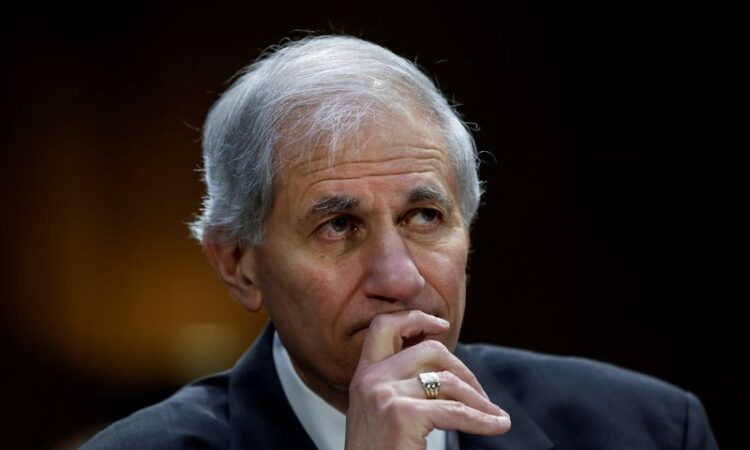
(Reuters) -A coming regulatory proposal will overhaul how large regional banks prepare living wills in the event of their failure, U.S. Federal Deposit Insurance Corporation Chairman Martin Gruenberg said on Monday.
U.S. regulators are seeking to strengthen oversight of the banking system, particularly in light of a string of collapses in March that included three of the largest in U.S. history.
“To that end, the FDIC plans to issue a notice of proposed rulemaking in the near future that will be a comprehensive restatement of the rule for notice and comment,” Gruenberg said in remarks prepared for a speech at the Brookings Institution in Washington.
The top three U.S. banking regulators in late July issued a joint proposal for sweeping changes to bank capital requirements as part of a 2017 international agreement, changes which the industry has vowed to fight.
Banks are currently required to submit plans to regulators detailing how they would wind up their businesses should they fail. Gruenberg said on Monday the proposal would make this planning “significantly more effective.”
The FDIC will call for plans that give it more options when overseeing a failed bank’s receivership, Gruenberg added, noting that the proposed “living will” requirements are separate from those for large bank holding companies under 2010 Wall Street reforms.
“The proposed rule would require a bank to provide a strategy that is not dependent on an over-the-weekend sale,” Gruenberg said.
Regulators handling the failures of Silicon Valley Bank and Signature Bank in March would have benefited from more robust information on how quickly banks could set up a “data room” for potential buyers, as well as information on continuing operations and internal communications, Gruenberg said.
The proposal would also require banks to identify parts that could be sold separately, Gruenberg said, noting that could reduce their size and “expand the universe of possible acquirers.”
The proposal would require additional information from banks with more than $50 billion in assets, but not full resolution plans, he said.
At the end of 2022, lenders with more than $50 billion in assets made up 1% of the total number of U.S. banks but held 80% of all uninsured deposits, making them more vulnerable to runs, Gruenberg said.
(Reporting by Douglas Gillison; Editing by Richard Chang)





